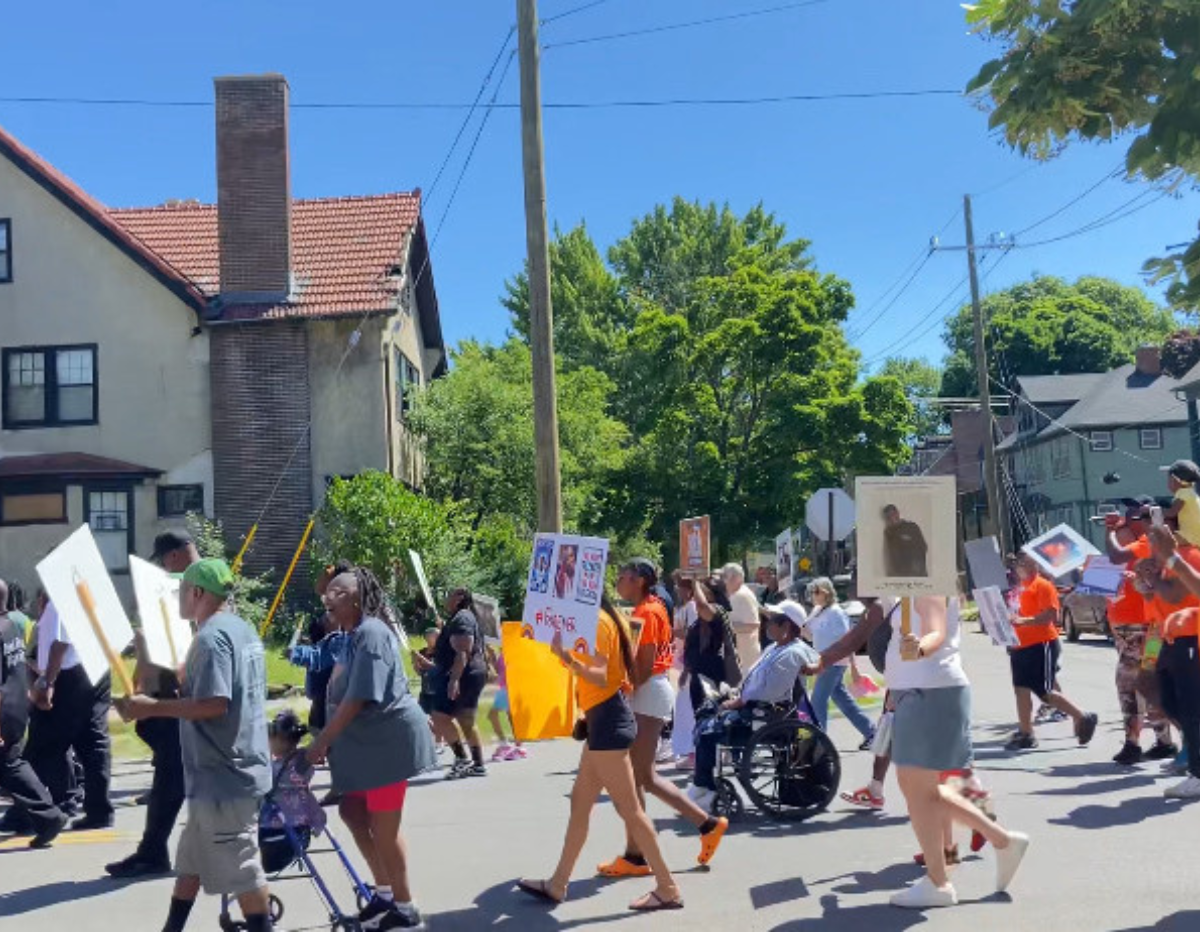
Last weekend, a booming bass drum and blaring horns filled up the block where I live in Detroit, along with shouts of “No more silence, end gun violence”. It was an unusually hot June day, a marching band led the parade, and folks wearing orange held signs with the faces of loved ones. They were marching to raise awareness about Gun Violence Prevention Month. The echoes of their voices permeated the street, reminding me of the loved ones I have lost to gun violence – a crisis that claims the lives of more than 120 Americans every day. Their declarations and cries also reminded me of the countless victims of intimate partner violence (IPV) who are part of that number. The reality became more harrowing when I learned that another one of my community members lost their life to gun related IPV just three days after the march.
Gun violence is an intersectional issue. IPV or domestic violence (DV) must be part of the conversation. Gun violence occurs in 61% of domestic violence homicides, however, firearms are used in 72% of domestic violence homicides in the Black community. It’s often believed that IPV isn’t relevant to gun violence prevention or community-based violence because it happens in “private” or is a “family issue” that stays within the home. On the contrary, having guns in the home creates a greater risk for DV-related homicides, and threatens the safety of everyone in the community. It’s impossible to break cycles of gun violence when one of the most common forms is minimized.
The intersection of IPV and gun violence exists on a continuum, with few protections and rights for those who are being harmed. Prisons across the country are filled with survivors who have killed their abusers by gun violence. While incarcerated, survivors are at risk of experiencing more violence, degradation, being denied resources, and being isolated from loved ones. There are also survivors of domestic violence like Marissa Alexander, who was incarcerated for firing warning shots to protect herself from her abuser, being revictimized by the criminal legal system. Someone experiencing abuse may be asked, “Why don’t you leave?”. The truth is, it’s not that simple. Abuse can become most dangerous when someone is trying to leave or has already left. A victim of IPV is five times more likely to die when an abusive partner has access to a gun. Community support and awareness can provide better outcomes for folks experiencing abuse, and end cycles of violence.
What can the community do to address these intersectional forms of violence?
First, we must explore the root causes of gun violence and identify similarities to gun violence, including racism, white supremacy, poverty, and income inequality, inequitable systems including education and health, exposure to violence, and historical trauma. We must also lean into protective factors. At the community level, this looks like engaging in meaningful conversations with community members about IPV, integrating IPV considerations into intervention services, building relationships with domestic violence advocacy organizations, ensuring survivors have access to victims’ rights resources, and redefining our understanding of safety in the community to include survivors of IPV.
As a DV advocate, I know that justice for survivors and victims is rooted in safety, healing, and accountability. Keeping that at the center of how we address IPV will bring us closer to a world where violence is rare.
References
Intimate Partner Violence And Gun Violence In The U.S. Are Inextricably Linked.
Domestic Violence and Firearms
The Facts on Gun and Domestic Violence



